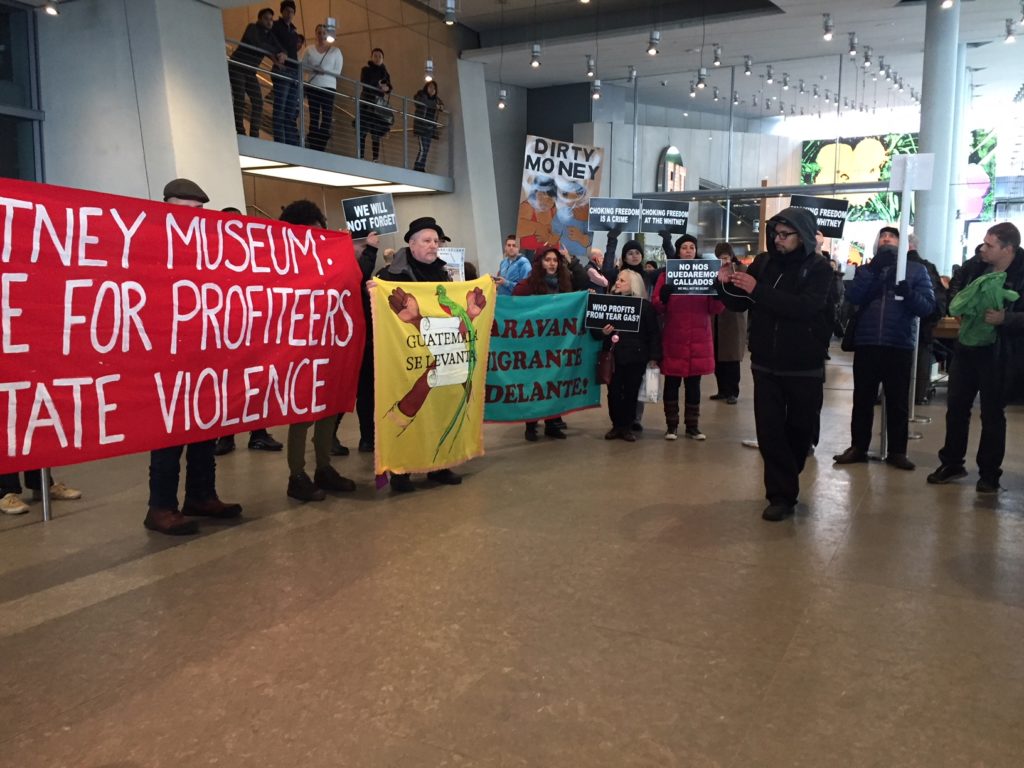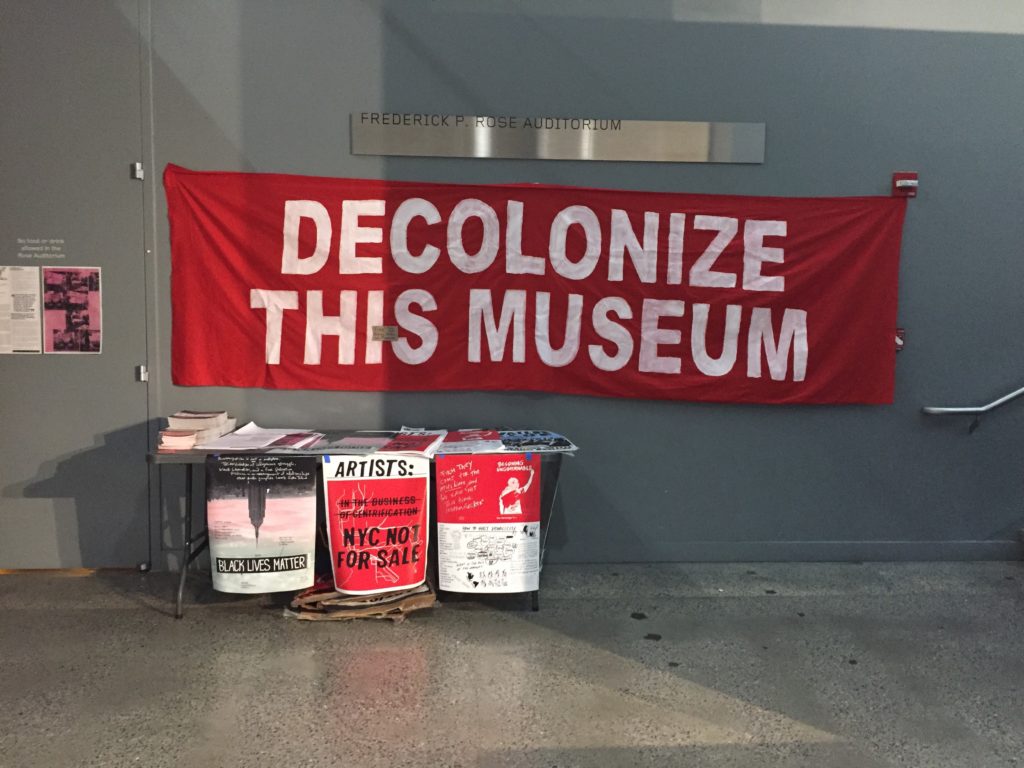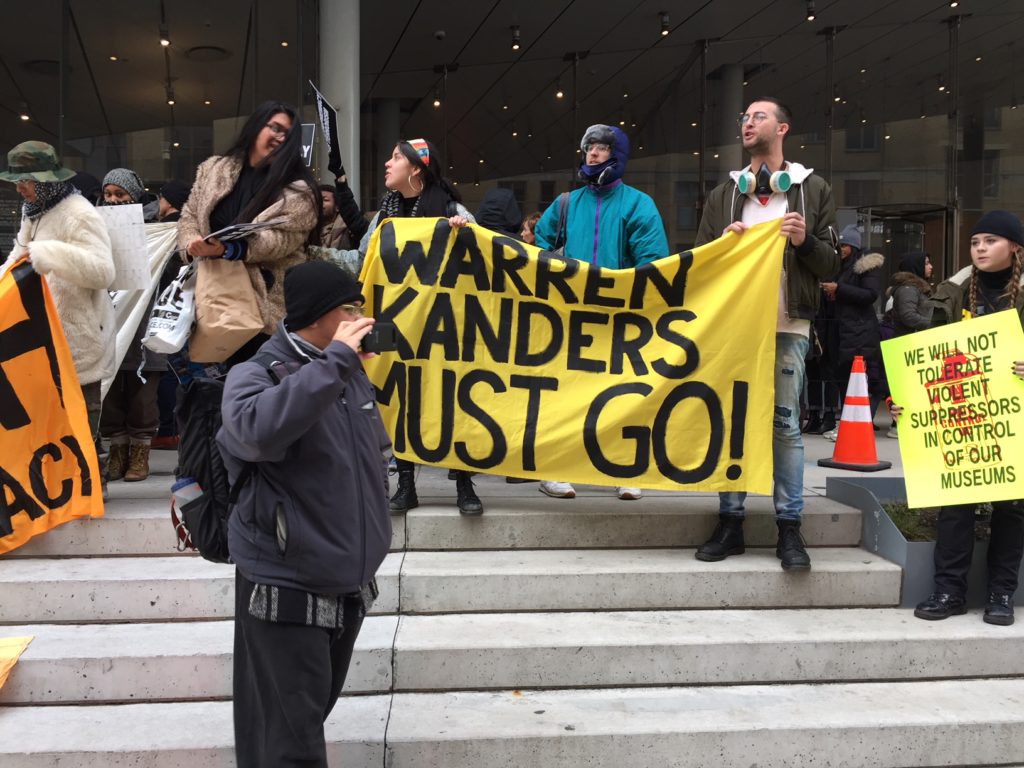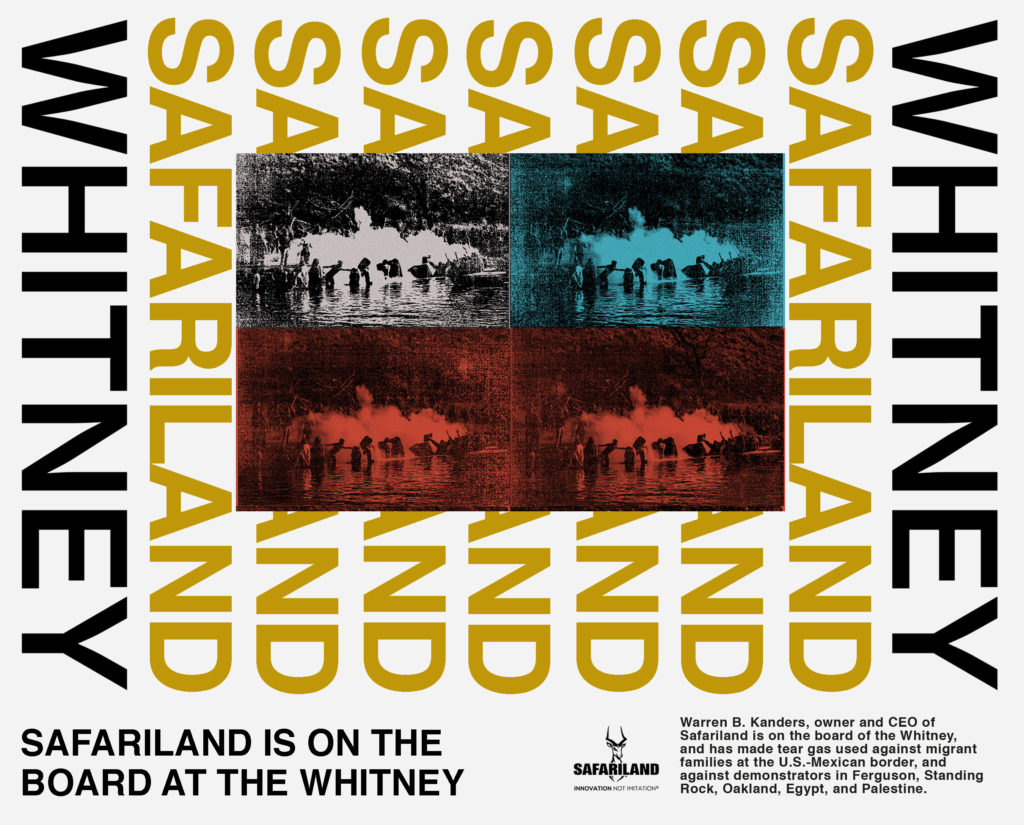[ad_1]

A poster produced by Decolonize This Place in protest of Warren B. Kanders.
COURTESY DECOLONIZE THIS PLACE
Since November 2018, activists have been calling on the Whitney Museum in New York to consider breaking its ties with Warren B. Kanders, who serves as its vice chairman and whose defense manufacturing company Safariland produced the tear-gas canisters used against asylum seekers along the U.S.-Mexico border. Below, ARTnews has assembled a timeline of the story. This post will be updated as there are new developments.
1996
Warren B. Kanders invests in American Body Armor, a defense manufacturing company. The following year, the company becomes Armor Holdings, Inc., a Jacksonville, Florida–headquartered operation, and Kanders serves as its chairman and CEO.
1999
Armor Holdings, Inc. acquires Safariland, a defense manufacturing company, for $41 million.
2006
Kanders joins the Whitney Museum’s board.
2007
BAE Systems, a British defense and security company, buys Safariland for $4.1 billion.

Protesters at Decolonize This Place’s action at the Whitney Museum in New York on December 9, 2018.
ALEX GREENBERGER/ARTNEWS
July 30, 2012
Kanders announces that he has reacquired Safariland for $124 million from BAE Systems. Kanders, who becomes chairman and CEO of the company, says in a release that Safariland has a “tremendous track record of commitment to safety, reliability and superior product design.” In an interview from the time, Kanders explains that he’d been trying to buy back Safariland for years, but the purchase had been delayed by a federal investigation into Armor Holdings’s former vice president, Richard Bistrong, who had been accused of paying bribes to foreign organizations in order to receive contracts for defense gear.
November 12, 2018
The Whitney’s Andy Warhol retrospective opens to the public. Kanders is listed as a “significant contributor.”
November 25, 2018
Tear-gas canisters are launched at migrants along the border between San Diego, California, and Tijuana, Mexico. Reporting by journalist Patrick Timmons reveals that the canisters bear Safariland logos.
November 27, 2018
A Hyperallergic report details Kanders’s Whitney connections.

Banners at a town hall held at Cooper Union, New York, on January 26, 2019.
ALEX GREENBERGER/ARTNEWS
November 30, 2018
In response to the Hyperallergic article, nearly 100 Whitney staff members sign a letter addressed to museum leadership that urges them to consider asking for Kanders’s resignation. “The Whitney has historically followed artists’ lead in finding our way through thorny decisions,” they write. “Now we encourage the Whitney to follow the lead of its staff.” Among the signatories are curators Marcela Guerrero, Rujeko Hockley, and Chrissie Iles.
December 3, 2018
Kanders and Whitney director Adam Weinberg respond to the Whitney staff’s letter to leadership. In a lengthy statement, Kanders says he is “not the problem the authors of the letter seek to solve,” and in his note to Whitney workers, Weinberg makes a plea for conversation.
December 6, 2018
Decolonize This Place, an activist group that has previously led protests at the Brooklyn Museum, the American Museum of Natural History, and elsewhere, announces that it will hold a protest at the Whitney. The group also releases a series of signs that intermingle advertisements related to the Whitney’s Warhol show, photographs of violence on the U.S.-Mexico border, and pictures of Kanders.
December 9, 2018
An action organized by Decolonize This Place is staged at the Whitney. Protestors arrive at the entrance and then move into the lobby, where so much sage is burned that the New York Fire Department is called. The action ties Kanders’s involvement in Safariland to larger histories of colonialism, racism, and queer erasure.

Decolonize This Place’s protest at the Whitney Museum in New York on December 9, 2018.
ALEX GREENBERGER/ARTNEWS
December 19, 2018
Posters by Decolonize This Place are distributed by artist Sibyl Kempson at a performance at the museum.
January 23, 2019
The activist collective W.A.G.E. issues an open letter urging 2019 Whitney Biennial participants to “demand to be paid for the content they provide and withhold that content until the demands of Whitney staff are met.”
January 26, 2019
Decolonize This Place, working with Chinatown Art Brigade and W.A.G.E., holds a town hall meeting at Cooper Union in which attendees devise strategies for continuing their protests at the Whitney. Among the attendees are artists Lyle Ashton Harris and Victoria Sobel and art historian David Joselit.

A poster for Decolonize This Place’s “Nine Weeks of Art and Action.”
COURTESY DECOLONIZE THIS PLACE
February 25, 2019
The Whitney Biennial artist list is announced. Some 75 artists are lined up to participate, though the New York Times reports that one—Michael Rakowitz—declined to participate in the exhibition as a protest against Kanders. The Times also reveals that, for the first time, the museum will pay artists in the biennial a W.A.G.E.-recommended fee of $1,500. The collective Forensic Architecture, which is one of the participants in the biennial, later says on Twitter that they will respond to the Kanders imbroglio.
February 27, 2019
In advance of the 2019 Whitney Biennial, Decolonize This Place announces plans to stage “Nine Weeks of Art and Action,” a weekly series of protest-minded events at the museum each Friday. The first protest is planned for March 22.
[ad_2]
Source link

